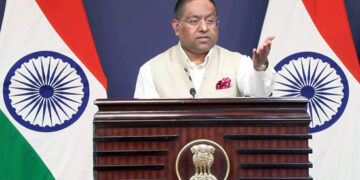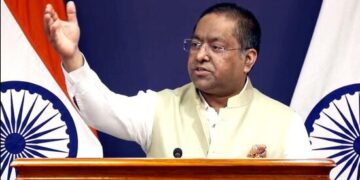U.S. President Joe Biden, during his visit to Israel on Wednesday, acknowledged the challenge of verifying information amid the conflict. He mentioned that the responsibility for the hospital explosion appeared to lie with Israel’s adversaries but noted that many people were uncertain about the facts.
The Reuters fact-checking unit has identified numerous instances of fake images and misleading information being disseminated on social media platforms in connection with the Israel-Hamas conflict. Some examples include:
- An individual using the name Farida Khan, claiming to be an Al Jazeera journalist in Gaza, posted a message about a “Hamas terrorist group missile landing in the hospital” during the hospital incident. Al Jazeera clarified that the account had no affiliation with their news service and had no employee by the name of Farida Khan.
- A video of Russian President Vladimir Putin discussing Ukraine was shared with fabricated subtitles warning the U.S. not to interfere in the Israel-Hamas conflict.
- Genuine images showing casualties from Hamas terrorist attacks on October 7 were misrepresented, including a 2015 video of a 16-year-old girl in Guatemala being falsely presented as a young Israeli woman being burned by a “Palestinian mob.”
- Pop singer Pink faced online criticism due to the blue and white flags used in her performance, leading her to clarify that she was using Poi flags, which have cultural significance in New Zealand.
Heightened tensions fueled by disinformation are having real-world consequences beyond the conflict zone. France has raised its security alert level following an Islamist attack resulting in the death of a teacher, and bomb alerts prompted the evacuation of the Louvre museum. In Illinois, a landlord was charged with hate crimes after allegedly killing a 6-year-old Palestinian American boy and wounding his mother, with the attack believed to be linked to the ongoing Middle Eastern conflict.
Jewish schools in London closed due to a 400% increase in antisemitic incidents recorded by a Jewish charity compared to the same period last year.
In modern conflicts, propaganda has played a significant role, with warring parties using television and, more recently, the internet to shape narratives and win over international public opinion. Disinformation, mixing truths with falsehoods, has become a powerful tool.
Regulators are closely monitoring the situation. The European Union’s industry chief, Thierry Breton, has called on major social media platforms, including X, Facebook (Meta), TikTok, and YouTube, to intensify their efforts to combat disinformation. Each company has claimed to have taken steps to address harmful content.
Since October 7, the Cyber Unit at Israel’s Office of the State Attorney has been working to remove content on social networks that incites violence associated with the Hamas terrorist group. The Israeli prosecutor’s office has submitted about 4,450 requests to remove such content, with the majority targeted at Facebook, TikTok, and X (formerly Twitter).
Rafi Mendelsohn, a vice president of the Israeli bot-monitoring firm Cyabra, has highlighted more than 40,000 fake accounts promoting pro-Hamas terrorist narratives online, some of which were created over a year before the attack. This scale suggests a sophisticated and coordinated effort that stands out among militant groups.
The conflict is generating two conflicting narratives, with both sides vying for international support. Disinformation is a tool used to obscure the truth, making it difficult for the public to discern facts from fiction in the ongoing crisis. Disinformation expert Marc Owen Jones warns of attempts to muddy the waters and undermine the credibility of narratives presented by both sides, ultimately casting doubt on the authenticity of images depicting Palestinian suffering and injuries.
The surge of online disinformation poses a significant challenge, as it not only shapes public perception but can also have real-world consequences, potentially intensifying an already volatile conflict.








 India
India












